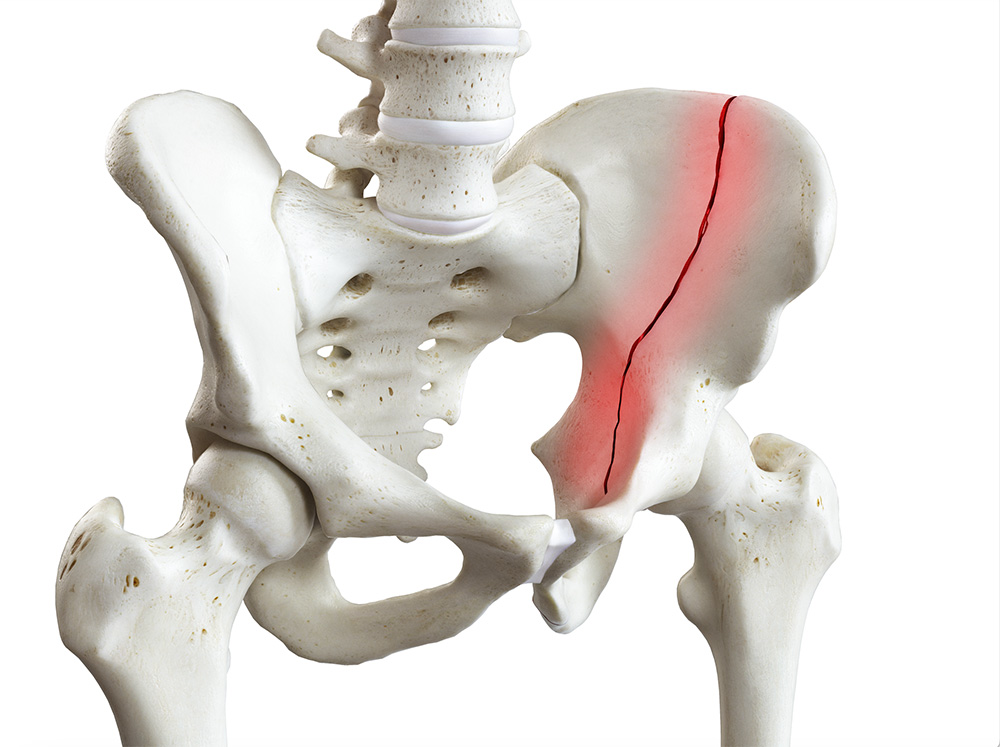
Researchers at Keck Medicine of USC are leading a patient-centered study of early surgery for pelvis fractures.
Research on patient-centered care is lagging for one type of patient in particular: those with a pelvic fracture.
“In orthopedic trauma and other orthopedic specialties, we are working to align treatment guidelines with patient-centered priorities,” says Joseph Thomas Patterson, MD, an orthopedic trauma surgeon with USC Orthopaedic Surgery, part of Keck Medicine of USC.
“Older adults are sustaining fragility fractures more frequently. We are seeing fractures of the pelvis increase faster than other fractures of the hip, spine and wrist. Unlike these other fractures, we do not have guidelines on how to care for older patients with pelvis fractures,” he says.
Patterson and his colleagues at Keck Medicine are designing a patient-centered research trial comparing two treatment strategies for older adults with fragility fractures of the pelvis. The trial will compare minimally invasive surgery (internal fixation) right away with trying nonoperative care first for five days. (Nonoperative care includes treatment from physical therapists and occupational therapists.) After trying nonoperative treatment for five days, the patients still have the option of undergoing surgery if they desire.

Patterson and his colleagues will compare outcomes between the two treatment protocols, including the risk of death, how well the patients are able to walk, how many days patients spend at home, pain medication use and quality of life in the first four months after their injury.
There is one important difference between this study and previous studies on pelvic fractures, he says. In this study, the researchers are designing the study through the lens of patient-centered care.
Factoring in patient preference
Before embarking on the pilot study, Patterson and his team gathered preliminary data to help them first understand which outcomes are most important to pelvic fracture patients.
Earlier this year, they published results of a survey they administered to 72 patients who had been treated for a pelvis fracture between June 2016 and March 2023. The researchers identified these patients from institutional registries and surveyed the patients between March 2023 and August 2023.
Survey participants, all of whom had previously experienced a pelvis fracture, were presented with 12 different treatment scenarios for a hypothetical pelvic fracture. The scenarios varied. Some included operative care; others involved nonoperative care. Some featured shorter hospital stays or longer hospital stays, greater or less risk of death, more pain or less pain, greater or less risk of needing a secondary surgery, being discharged to different locations including home versus a skilled nursing facility, and the ability to walk without assistance within one month of injury.
Participants ranked these scenarios, awarding the highest scores to scenarios with the most desired outcomes. Patterson classifies this as a discreet choice experiment, a method developed in economics for analyzing consumer behavior. “It gives you a very scientific way of ranking a person’s preferences,” he explains. “Depending on how you respond to hypothetical scenarios, we can determine how much you care about each different attribute.”
“Our goal was to understand which outcomes mattered most to the patients who survived a pelvis fracture. This helps us ensure that the outcomes we choose for our clinical trial are outcomes patients actually care about,” he adds.
The survey showed Patterson and his colleagues which outcomes the respondents valued most. “Our patients told us that they cared more about being able to walk independently, leaving the hospital quickly, going home and avoiding a surgery at a later date than they did about dying in the first month,” he says. “That’s kind of shocking.“
He continues: “You would expect people to care most about dying. But this is a theme we have seen in older adults: they prioritize the quality of the life they have in the time remaining rather than the end of life itself.”
A pelvic fracture study designed with patients in mind
Patterson and his colleagues are now designing their clinical trial keeping in mind the preferences of their survey respondents, who were mostly older adults. They will still track outcomes such as patient mortality and pain, but they are also assigning more weight to the outcomes patients themselves prioritized, such as walking independently and returning home.
The study will be led by researchers from Keck Medicine and the Keck School of Medicine of USC and will also be conducted at other sites in North America and abroad. The patients enrolled will be older adults entering the hospital for a new pelvis fracture, meaning patients undergoing treatment in real time as opposed to answering hypothetical survey questions.
The ultimate goal, Patterson says, is to help physicians make shared decisions with patients and their families about treatment choices. This patient-centered model of care focuses on choices that align with individual patient priorities instead of a one-size-fits-all approach to medicine.
“I want to be able to walk into the room of a patient who has a pelvic fracture and have an informed conversation with them,” he says. “Is surgery the right thing for you? Can I get you back to where you want to be faster with surgery? Or would you be better off without that risk — should you try to get up and walk immediately?”
Topics
